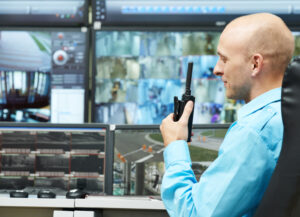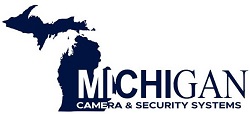Importance of Security in Safeguarding Patients
Importance of Security in Safeguarding Patients
The importance of security in safeguarding patients in behavioral health facilities

Behavioral health facilities play a crucial role in society, providing vital care and support to patients facing mental health challenges. These facilities serve as a refuge for individuals with behavioral and psychological disorders, allowing them to heal and recover. However, given the complexity of caring for these patients, ensuring their safety and well-being throughout their treatment journey is paramount.
The importance of a secure and controlled environment in behavioral health facilities cannot be emphasized enough. Patients in these facilities may experience moments of crisis, agitation or even pose a risk to themselves. Consequently, it is essential to establish strong security measures that protect the patients and safeguard the dedicated staff providing care.
Understanding the Challenges Faced by Behavioral Health Facilities
Behavioral health facilities face various unique challenges that require a comprehensive approach to security. These facilities must ensure patients’ and staff’s safety and well-being while providing a therapeutic and supportive environment.
One of the primary challenges is managing the risk of self-harm or harm to others. Patients in behavioral health facilities may be dealing with severe mental health issues and exhibit behaviors that can harm themselves or others. Therefore, these facilities must have strict protocols to prevent and respond to potential incidents.
Patient elopement, or unauthorized leaving of the facility, is another challenge behavioral health facilities must address. Patients may attempt to leave the facility for various reasons, such as feeling overwhelmed or seeking substances. Ensuring adequate security measures, such as secure doors and monitoring systems, is critical to prevent elopement and protect patients.
Additionally, behavioral health facilities must be prepared to handle crises. These facilities can experience intense conflict or aggression, requiring staff intervention and de-escalation techniques. Staff members must be trained to handle these situations safely and effectively to prevent injuries and maintain a secure environment.
Protecting patient privacy is also a significant concern for behavioral health facilities. Maintaining confidentiality is crucial as patients disclose sensitive and personal information during therapy and counseling sessions. Data protection measures, such as secure record-keeping practices and strict access controls, are necessary to protect patient privacy.
Furthermore, behavioral health facilities must navigate the complex legal and regulatory requirements landscape. Compliance with laws such as the Health Insurance Portability and Accountability Act (HIPAA) and state-specific mental health laws is necessary to uphold patients’ privacy and rights.
In summary, behavioral health facilities face unique challenges in providing patients with a secure and supportive environment. By addressing the risk of self-harm, elopement, crises, patient privacy, and legal compliance, these facilities can provide effective treatment and support for individuals with mental health and behavioral disorders.
Patient aggression: One of the biggest challenges in behavioral health facilities is patient aggression. Mental health disorders can cause violent outbursts or aggressive behavior, putting patients and staff at risk. Striking a balance between maintaining a therapeutic environment and ensuring everyone’s safety is crucial.
Self-harm: Another pressing challenge is self-harm. Some patients may intentionally harm themselves due to their mental health conditions, driven by hopelessness or despair. Preventing self-harm requires constant monitoring, supportive interventions, and a secure environment that minimizes opportunities for such actions.
Elopement: Elopement is also a significant concern in behavioral health facilities. It refers to patients leaving the facility without permission or proper supervision. Patients may attempt to elope due to distress, agitation, or confusion, endangering their well-being and disrupting their treatment plans.
Creating a safe and therapeutic environment is vital for behavioral health facilities. Patients need to feel secure and stable to engage in their treatment effectively. A protected environment fosters trust between patients and staff, promoting open communication and cooperation during therapy sessions.
Enhancing the security of behavioral health facilities is imperative for safeguarding both patients and healthcare professionals. An effective security plan addresses the unique challenges these facilities face and promotes a healing and recovery-oriented environment.
Here are some essential elements of a comprehensive security plan that aid in the protection of patients and mitigate unauthorized access:
1. Access Control: Implementing Michigan access control systems is pivotal to bolstering security in behavioral health facilities. These systems monitor and regulate entry and exit points throughout the premises. By utilizing access control badges, biometric authentication, or key codes, only authorized individuals – such as staff members and assigned patients – can access specific areas.
2. Limiting Unauthorized Entry: Restricting unauthorized entry is vital for ensuring the safety and security of the facility. Access control can be employed to safeguard high-security zones, including medication storage and staff-only areas, preventing patients from accessing sensitive areas. Furthermore, integrating access control systems with patient databases ensures that access privileges are regularly updated and tailored to each patient’s treatment plan.
3. Surveillance is essential for monitoring patient behavior, maintaining staff safety, and identifying potential incidents. Michigan Security cameras placed strategically throughout the facility allow staff to observe patient activities and quickly respond to any concerning behavior or signs of distress.
Surveillance cameras act as a deterrent, reducing the likelihood of aggressive acts or disruptive behavior. Additionally, video footage can serve as valuable evidence, aiding investigations and promoting accountability.
Modern surveillance systems may also include advanced features like video analytics, automatically identifying abnormal behaviors or unauthorized movements. This proactive approach allows staff to intervene before a situation worsens and respond promptly to emerging issues.
The importance of alarm systems in behavioral health facilities in Michigan cannot be overstated. These systems are crucial for quickly identifying and alerting staff and security personnel to potential threats. Unauthorized access attempts, patient aggression, or self-harm incidents can trigger them.
Through audible alarms and visual alerts placed strategically throughout the facility, staff can be instantly notified of security breaches or emergencies. This allows for swift responses and ensures the safety of everyone involved. Furthermore, these alarm systems can also be connected to off-site monitoring centers, enabling a coordinated and rapid response to critical situations.
In addition to their immediate benefits, alarm systems also play a vital role in maintaining a safe and secure environment within the facility. They can detect and respond to problems in real time, significantly contributing to overall security.
To create a comprehensive security plan, behavioral health facilities should incorporate access control systems to limit unauthorized entry and protect sensitive areas. Michigan Surveillance systems should also be in place to monitor patient behavior and ensure staff safety. By integrating these key elements into their security strategy, facilities can effectively provide compassionate care while prioritizing the safety and well-being of their patients and staff.
Service and installation for these makes and models and more





